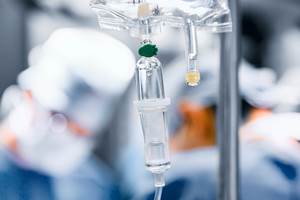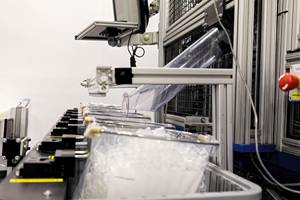Medical Device Production to See Accelerating Growth
Indicators are positive over the next six to 12 months.
A week prior to this writing, the Supreme Court gave its support to the Affordable Care Act (ACA; aka Obamacare) by affirming the legality of nationwide subsidies. Since the ACA was passed, the medical-device and supply industry has been filled with uncertainty. This uncertainty has led to significant ups and downs and changes in direction in the industry over the last two years.
In February 2015, medical-care spending and our medical business index were pointing to slower growth in medical-device production. But, now the leading indicators are pointing in the exact opposite direction, toward accelerating growth in medical production.
Since the early 1970s, real medical-care spending has increased on a virtually straight line. However, once the ACA was passed, the slope of that straight line increased, meaning the rate of growth in medical-care spending increased.
The one-month rate-of-change shows that real medical-care spending has increased by 5% or more in each of the last five months. The last time that happened was June through October 2002. As a result, the annual rate of change in medical-care spending has reached 4.1%, which is up from 2% in November 2013.
Medical-care spending is a good leading indicator of medical-equipment/device production. In medical, production is generally on a two-year cycle. That is, from a peak or trough in the rate of change it takes about two years to hit the next peak or trough. But the amplitude of the peaks and troughs tend to rise and fall with the direction of medical-care spending. In 2014, medical-device production grew at an accelerating rate in response to the accelerating growth in medical-care spending. Yet despite the rapid acceleration in medical-care spending, production has seen slower growth in 2015.
Given the strength of the surge in medical-care spending, it is possible that production will hit a growth rate of 7% to 9% around the end of 2016.
Our medical business index has been fairly positive in 2015. The new orders index has been above 60% in three of the first five months. Since January 2014, production has increased in every month but three. And in two of those three months it was flat.
Significantly, backlogs have increased in three of the last five months. This indicates that capacity utilization should be increasing and that there will be a greater need for new devices as we move into 2016.
The overall index would be seeing even stronger growth, except that employment and exports have been trending down for almost a year. Exports have fared poorly over this time as the dollar has generally gotten stronger relative to all world currencies. Supplier deliveries have lengthened substantially, which indicates strength throughout the medical supply chain. Finally, prices received and future business expectations have been on a slight uptrend since May 2013.
Related Content
Record Reshoring Rates in 2022
Reshoring and foreign direct investment (FDI) in the third quarter marked their highest ever level, eclipsing the previous record set in the second quarter of 2022.
Read MoreUse Cavity Pressure Measurement to Simplify GMP-Compliant Medical Molding
Cavity-pressure monitoring describes precisely what’s taking place inside the mold, providing a transparent view of the conditions under which a part is created and ensuring conformance with GMP and ISO 13485 in medical injection molding.
Read MoreSeaway Plastics Acquired
Private equity firm ICG purchased the injection molder and its three facilities located in Florida and California.
Read MoreAs Currier Grows in Medical Consumables, Blow Molding Is Its ‘Foot in the Door’
Currier Plastics has added substantial capacity recently in both injection and blow molding for medical/pharmaceutical products, including several machines to occupy a new, large clean room.
Read MoreRead Next
Processor Turns to AI to Help Keep Machines Humming
At captive processor McConkey, a new generation of artificial intelligence models, highlighted by ChatGPT, is helping it wade through the shortage of skilled labor and keep its production lines churning out good parts.
Read MoreWhy (and What) You Need to Dry
Other than polyolefins, almost every other polymer exhibits some level of polarity and therefore can absorb a certain amount of moisture from the atmosphere. Here’s a look at some of these materials, and what needs to be done to dry them.
Read MoreHow Polymer Melts in Single-Screw Extruders
Understanding how polymer melts in a single-screw extruder could help you optimize your screw design to eliminate defect-causing solid polymer fragments.
Read More
.JPG;width=70;height=70;mode=crop)




.png;maxWidth=300;quality=90)

















